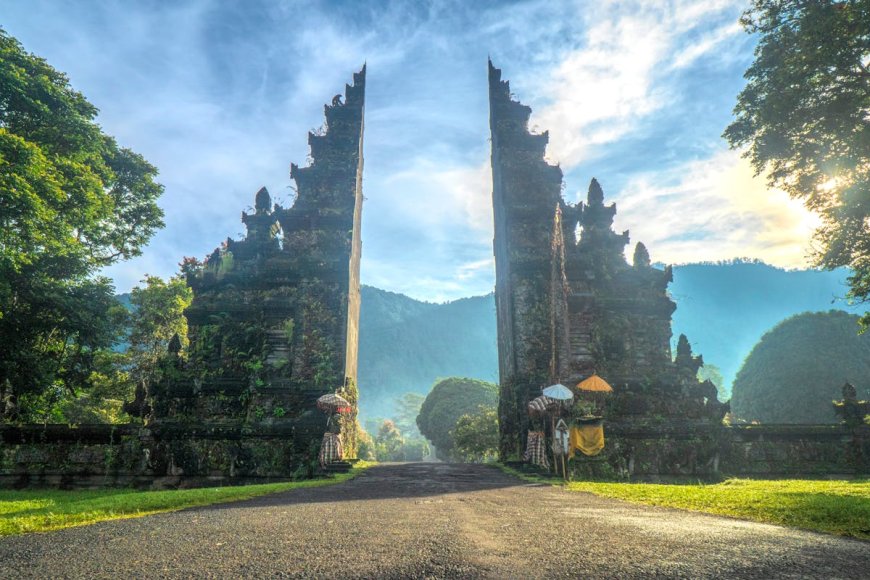Is Laos the Next Bali? Why Americans Are Skipping Thailand and Booking This Underrated Gem Instead
Here’s a plot twist nobody saw coming: while your Instagram feed is clogged with yoga retreats in Bali and full-moon parties in Thailand, a quiet revolution is happening next door. Laos—a country with zero beaches, a dusty image, and barely a marketing budget—is suddenly blowing up.

Here’s a plot twist nobody saw coming: while your Instagram feed is clogged with yoga retreats in Bali and full-moon parties in Thailand, a quiet revolution is happening next door. Laos—a country with zero beaches, a dusty image, and barely a marketing budget—is suddenly blowing up.
It’s not hype. It’s real. Backpackers are turning into slow travelers. Digital nomads are abandoning Chiang Mai for Luang Prabang. And yes, Americans are ditching Bali’s traffic and inflated prices for something raw, calm, and surprisingly soulful.
This isn’t a trend piece. It’s a wake-up call. In this guide, you’ll find out why more U.S. tourists are choosing Laos in 2025, what makes it different from its flashier neighbors, and whether it’s ready—or even wants—to be the “next Bali.”
Why Comparing Laos to Bali Might Miss the Point
Let’s get something straight—Laos isn’t Bali. There’s no beach. No infinity pool cliff resorts. No surfer bros doing downward dog at 6 a.m. But that’s actually the point.
Laos isn’t trying to be your next dream destination.
It’s just being—and people are finally paying attention.
And maybe that’s why it’s pulling in a new wave of American travelers who are tired of Instagram tourism and hungry for something that feels real again.
The New Face of Laos: What’s Changing in 2025
High-Speed Rail = Game Changer
The China-Laos railway, finished just a few years ago, connected remote parts of the country like never before. Now, tourists can zip from Vientiane to Luang Prabang in under 2 hours. Before this, it was an all-day slog by bus on winding mountain roads (a vomit-inducing journey I’ll never forget).
So yeah—it’s now easier than ever to explore Laos. And that’s pushing tourism beyond backpacker trails and into a more mainstream lane.
More Flights, Less Friction
Direct flights from Bangkok, Seoul, and Tokyo have skyrocketed in 2025. Even rumors of seasonal charters from SFO and LAX are circulating.
The result? More Americans are realizing, “Wait… Laos is only a few hours from Thailand, and flights are under $100?”
What U.S. Tourists Are Actually Doing in Laos
1. Chasing Waterfalls (And They’re Not Just for Instagram)
Laos is packed with waterfalls that don’t have a Starbucks in view. Places like Kuang Si Falls, with its turquoise pools layered like steps, or the lesser-known Tad Fane, which plunges into misty jungle gorges.
These aren’t just photo-ops. They’re swimming holes. Meditation spots. Literal daydreams.
And because Laos isn’t crawling with tour buses yet, you can actually feel alone in nature again.
2. Living Slow in Luang Prabang
This town is where Bali-style vibes meet Buddhist serenity—with none of the chaos.
- Ancient temples? Check.
- French colonial cafes? Yup.
- Orange-robed monks at sunrise? Every morning.
Luang Prabang isn’t trying to sell you something every five steps. You can sip your coffee, read, walk along the Mekong, and actually breathe. Sounds simple, right? It’s magic.
3. Floating Down the Mekong (Real Travel, Not Just Transit)
Imagine this: no honking. No phone signal. Just jungle, water, and the occasional fisherman waving as your slow boat drifts past.
Two-day river trips from Huay Xai to Luang Prabang are becoming the new Southeast Asia bucket-list. And unlike Bali’s overloaded beach clubs, these river journeys give you space—mental and literal.
It’s the opposite of over-tourism.
Is Laos Safe for American Travelers?
Short answer: Yes. Longer answer: With common sense, absolutely.
Crime rates are low in Laos, particularly in popular tourist destinations like Vang Vieng and Luang Prabang. The greatest "risk" is most likely that you will become dependent on sticky rice and begin looking up real estate prices in the bush.
Still, some basics:
- Don’t flash wads of cash.
- Watch out for foodborne stomach issues (especially with street meat).
And don’t go digging for old metal in rural areas. Laos still has unexploded bombs (from a war the U.S. never officially declared, but you probably heard about in high school history class).
How Much Does Laos Cost? (Spoiler: You’ll Be Shocked)
Americans coming from Bali or Thailand often feel like Laos is stuck in 2010 prices—in the best way possible.
Here’s what you might pay:
- Guesthouse room: $10–$20/night
- Street meal: $1.50–$3
- Beer Lao: $1 (yes, one dollar)
- Private bungalow with a view? $25–$50
Compare that to Bali, where an avocado toast now costs as much as your firstborn. Laos is a budget dream that doesn’t feel cheap. It feels generous.
The Cultural Experience Isn’t a Performance—It’s Real
Some places in Southeast Asia are like cultural Disneyland, let's face it. After paying for a "local experience," you discover it's merely a tourist-oriented staged production.
Laos doesn’t play that game.
Monks still collect alms in silence. Farmers still work the fields by hand. Villagers still invite you into their homes—not for a fee, but because that’s who they are.
The humility? The kindness? It’s not for show. It’s their way of life. And it’ll stick with you long after the trip ends.
What Laos Still Doesn’t Have (And Why That’s a Good Thing)
Let’s not pretend Laos is perfect for everyone.
There’s no Uber. No shopping malls. Wi-Fi can be shaky. And your favorite TikTok filter might not load.
But that’s the very reason many people fall in love with it.
If you want:
- All-day spas,
- Nightclubs with fire dancers,
- Or upscale vegan brunch chains...
...go to Bali. Laos is for people who want presence. Who crave depth. Who can sit still by a river and not need to post it every five seconds.







